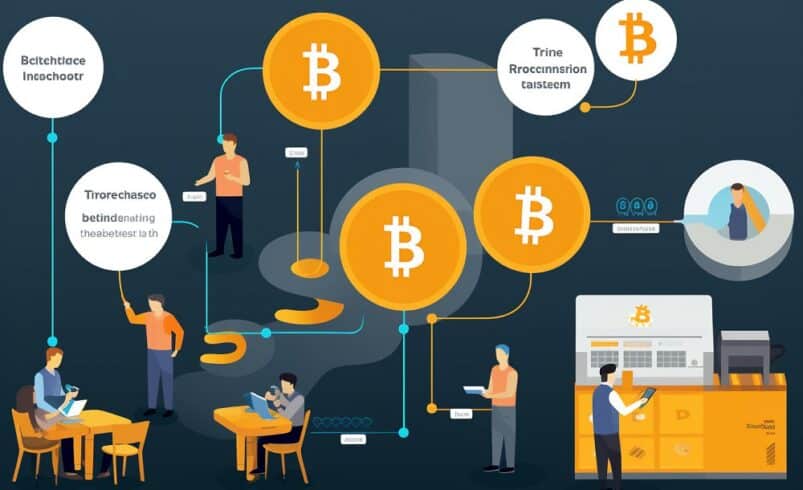Understanding Swing Trading And Scalping: A Comparison

Table of Contents
Cryptocurrency traders adopt various strategies to navigate the market’s volatility, with swing trading and scalping as distinct approaches. These strategies cater to traders with varying preferences and temperaments.
This guide explores both strategies, analyzing their risks and how to choose between the two trading options.
Overview Of Swing Trading
Cryptocurrency investors use a swing trading strategy to capitalize on short-to-medium-term price movements within the market. This strategy involves identifying and leveraging the “swings” or fluctuations in a cryptocurrency’s price between a few days and several weeks.
Critical Features Of Swing Trading
Swing trading has several features, including:
- Extended Hold Period: Swing traders aim to hold positions for a duration that surpasses intraday trading to take advantage of broader market movements.
- Trends Analysis: These traders often perform technical and fundamental analyses to identify potential entry and exit points based on evolving market trends or specific cryptocurrency movements.
- Risk Management: Traders may employ stop-loss orders or predetermined exit points to manage risk, protecting themselves from significant losses if the market moves against their expectations.
- Less Stressful: Swing trading is less stressful than day trading or scalping. It allows traders to monitor the market less frequently due to its longer holding periods.
Overview Of Scalping
Meanwhile, Scalping is a high-frequency trading strategy focused on making quick profits from short-term price movements. This technique involves making multiple trades within a day, taking advantage of rapid market fluctuations that can occur within seconds to minutes.
Scalpers aim to exploit tiny price differentials for incremental gains, leveraging high trading volume and executing numerous trades.
Key Features Of Scalping
Just like swing trading, scalping also offers crypto traders several features. These include:
- Speed and Precision: Scalping demands quick decision-making and precise timing, with traders aiming to capitalize on even the slightest price shifts.
- High-Frequency Trading (HFT): Scalpers execute many trades within a single day, leveraging the high trading volume to accumulate profits from multiple small gains.
- Tight Stop-Loss Orders: To manage risk, scalpers often employ tight stop-loss orders, swiftly exiting positions if the market moves against their expectations.
- Constant Vigilance: Scalping requires traders to monitor price movements closely, seek immediate profit opportunities, and remain highly alert to market changes.
- Intense and Stressful: Scalping can be more stressful than swing trading due to its rapid pace and constant monitoring. It often demands quick reactions and continuous attention to the market.
Differentiating Swing Trading From Scalping
Understanding the distinct characteristics and practices of swing trading and scalping is necessary for cryptocurrency traders.
Execution In Swing Trading And Scalping
Swing trading adopts a patient and strategic approach, focusing on longer-term price movements. Traders employing this strategy aim to benefit from anticipated market swings by holding positions for days or weeks.
This method allows for a more relaxed trading atmosphere, permitting traders to monitor market movements without the constant pressure for immediate action. One significant advantage of swing trading is its reduced sensitivity to transaction fees, as traders hold positions for longer periods, allowing them to ride out smaller daily fluctuations without concerns over costs impacting profits.
On the other hand, scalping revolves around rapid and precise trading, targeting short-term price fluctuations. This strategy demands quick decision-making and constant market vigilance, as scalpers aim to profit from micro fluctuations within extremely short timeframes.
Scalpers execute numerous daily trades, leveraging high-frequency trading (HFT) techniques to take advantage of even the slightest price movements. Despite the potential for smaller gains per trade, scalping allows for accumulating profits through a higher volume of transactions.
However, it’s crucial to consider transaction fees, as these can significantly impact overall gains when making multiple trades.
Comparative Risk And Timeframes
Swing traders generally analyze longer-term charts, such as four-hour or daily charts, allowing for a more comprehensive evaluation of trends. Although they risk price drops over the investment period, swing traders can ride out smaller daily fluctuations without immediate concern.
In contrast, scalpers focus on much shorter timeframes, often operating within one to 15 minutes and sometimes within one to two minutes. This strategy exposes them to higher market volatility, demanding quick responses and amplifying risk due to the rapid pace of trading.
Choosing Between Swing Trading And Scalping
Deciding between swing trading and scalping hinges on a trader’s temperament, preferences, and risk tolerance. Scalping demands quick decisions and tolerance for high-pressure situations, whereas swing trading requires patience and a relaxed approach.
Considerations like personal traits, time availability, and desired exposure to various assets in the market determine which approach a trader can utilize. Therefore, experimenting with demo trades, known as “paper trading,” can offer valuable experience without financial risk, enabling traders to understand which strategy aligns best with their goals and style.
Conclusion
Numerous factors, including risk tolerance, knowledge, and market understanding, influence success in cryptocurrency trading.
Time Crypto Market offers content visibility for dozens of crypto enterprises, and you can be a part of our network! Reach out to us on our telegram chat for inquiries. The nature of cryptocurrencies is highly unpredictable; always perform your due diligence before any investment. Several articles on our site come from guest contributors or are commissioned pieces, not originating from Time Crypto Market's in-house writers. The perspectives shared in these articles might not necessarily align with those of Time Crypto Market. We do not assume responsibility for the veracity, caliber, promotions, offerings, or any other elements presented on our platform. Consult our comprehensive terms of service and disclaimer for more details.








